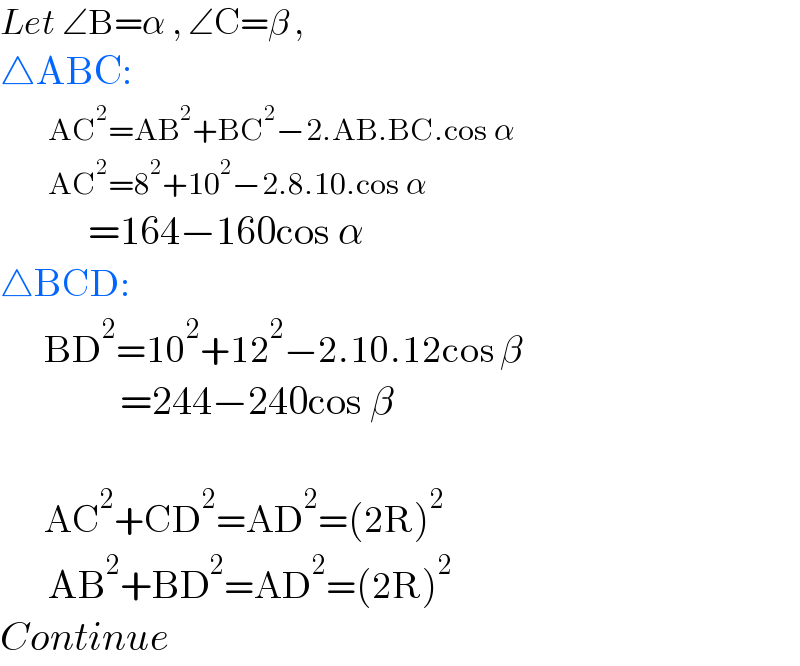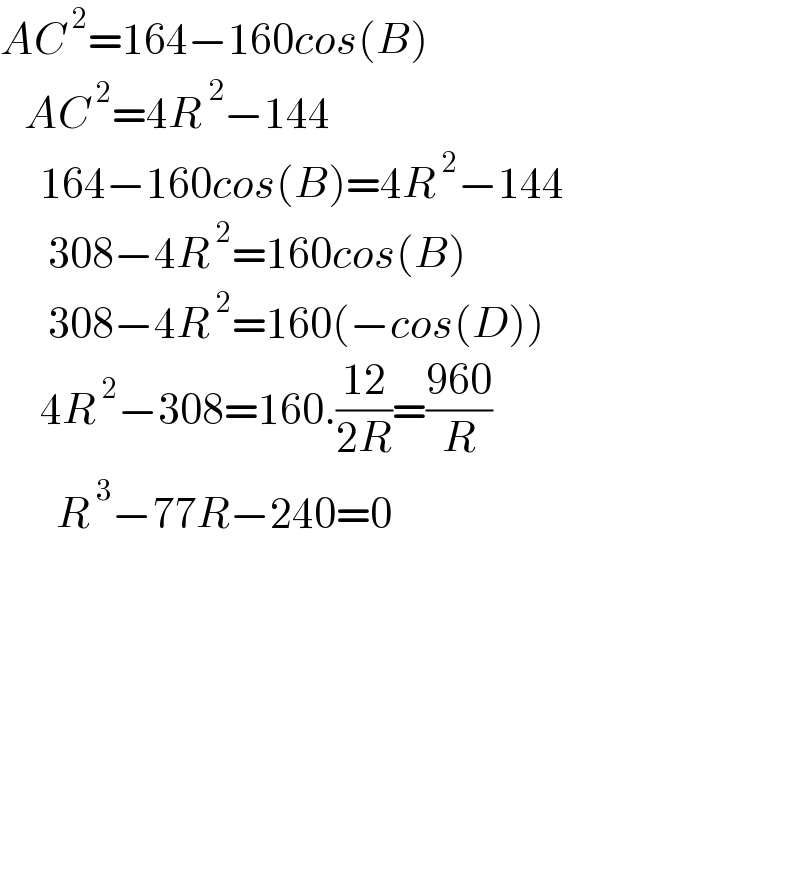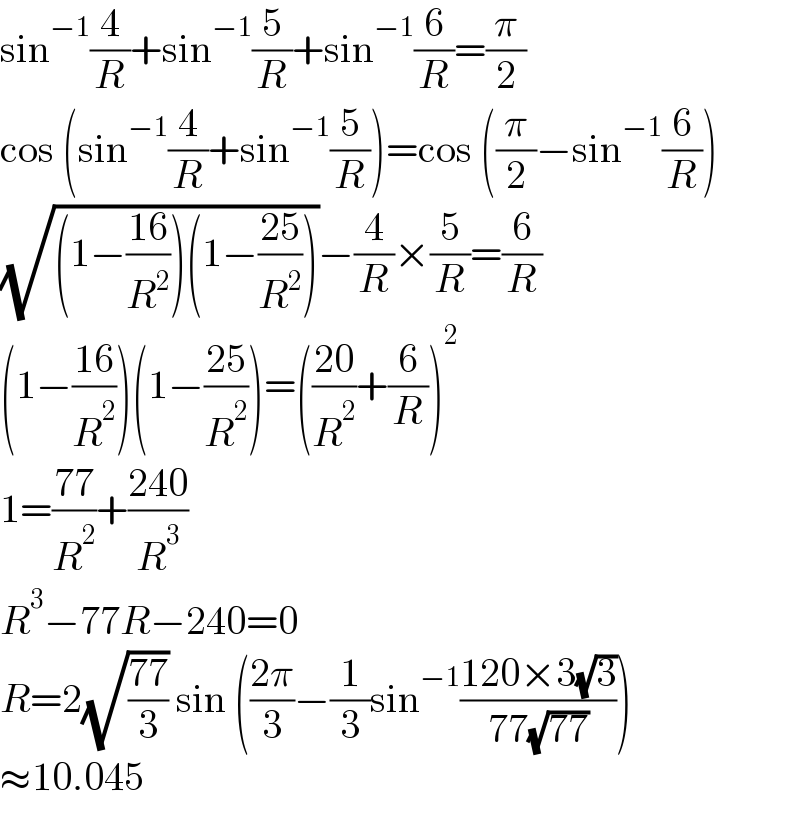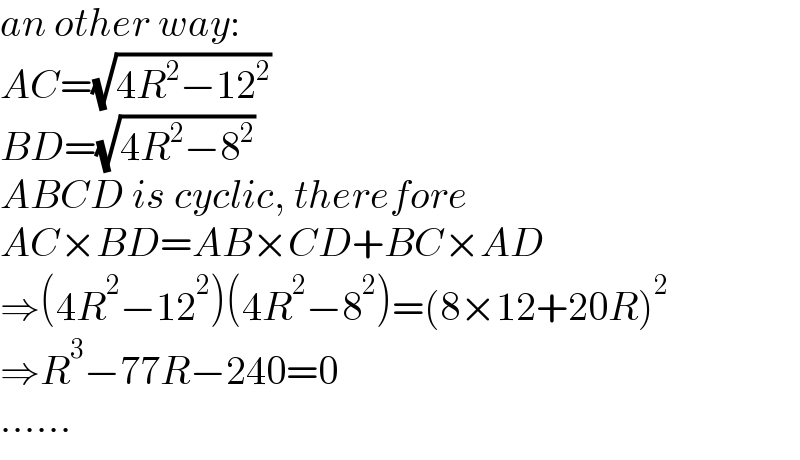
Question and Answers Forum
Question Number 148543 by liberty last updated on 29/Jul/21

Answered by Rasheed.Sindhi last updated on 30/Jul/21

Answered by mnjuly1970 last updated on 29/Jul/21

Answered by mr W last updated on 29/Jul/21

Commented by liberty last updated on 30/Jul/21

Answered by mr W last updated on 29/Jul/21

Commented by Tawa11 last updated on 03/Aug/21

